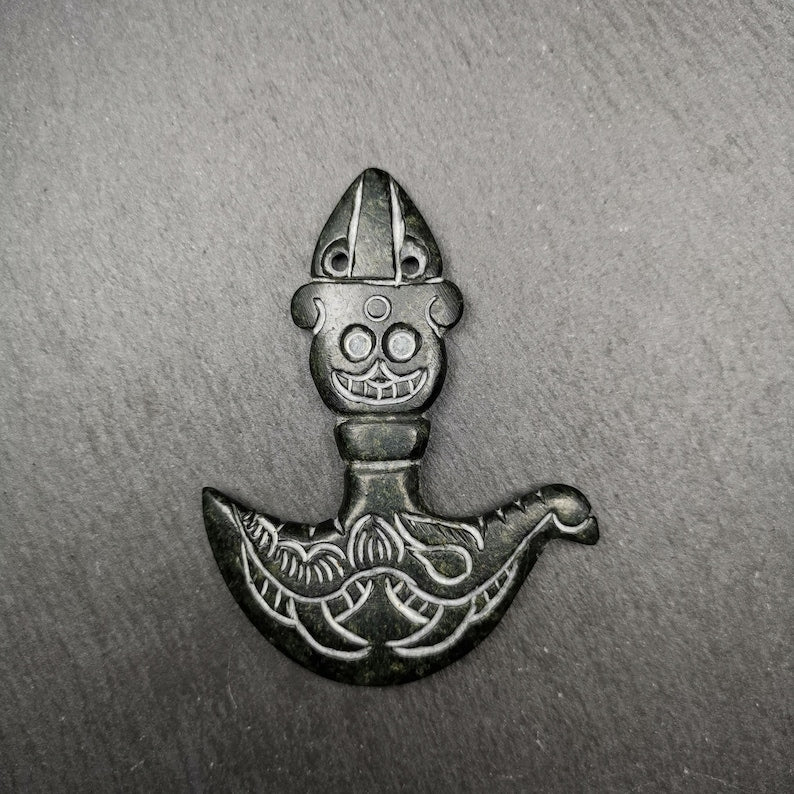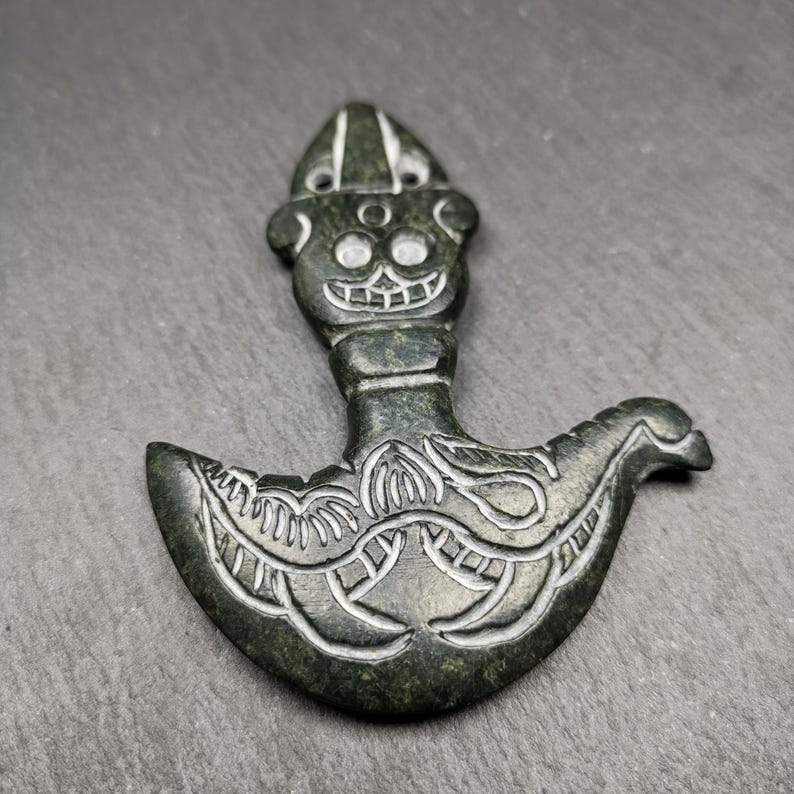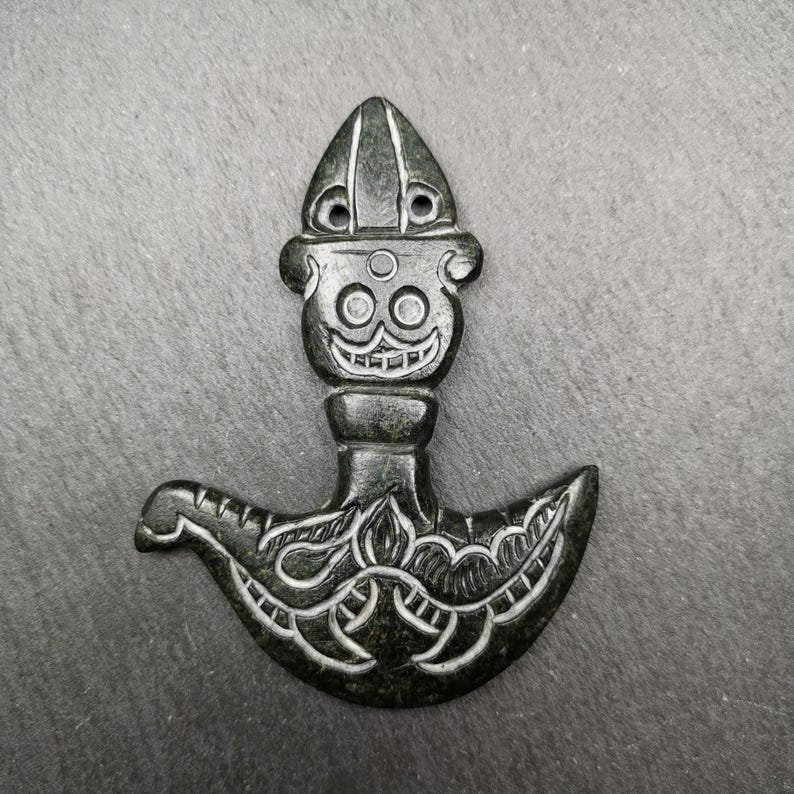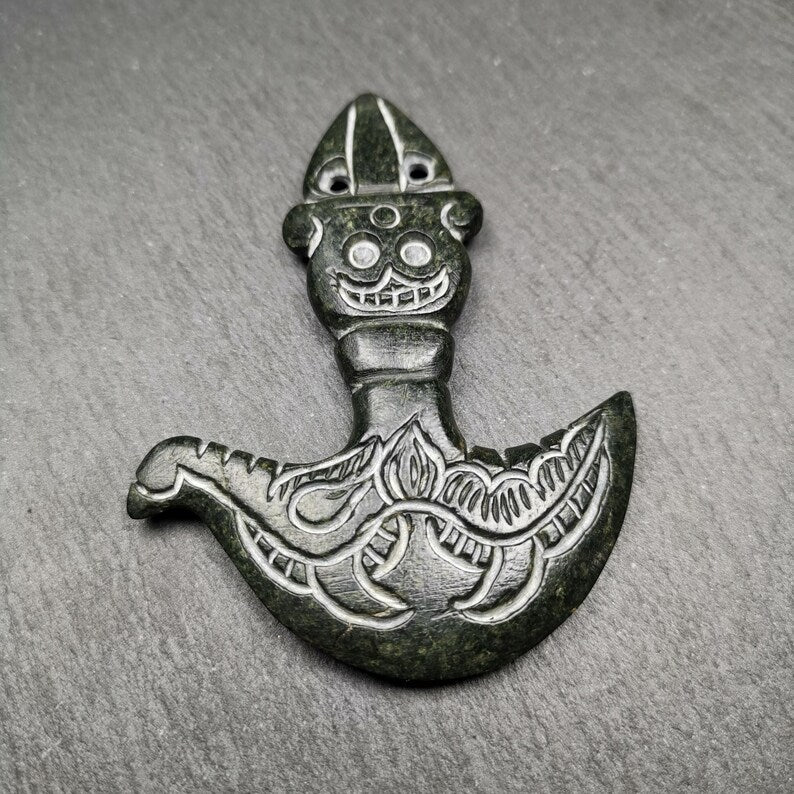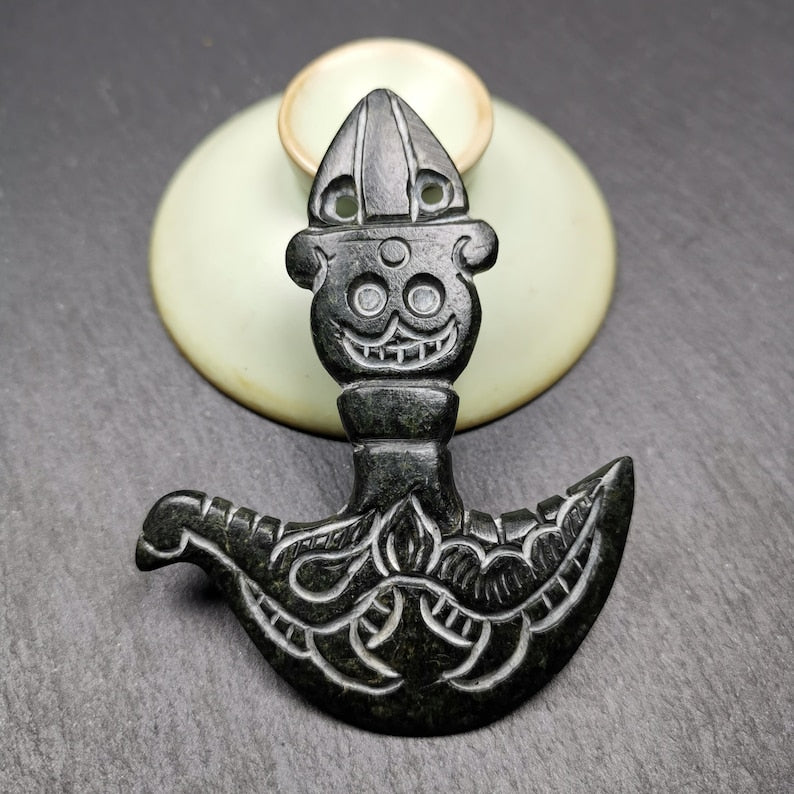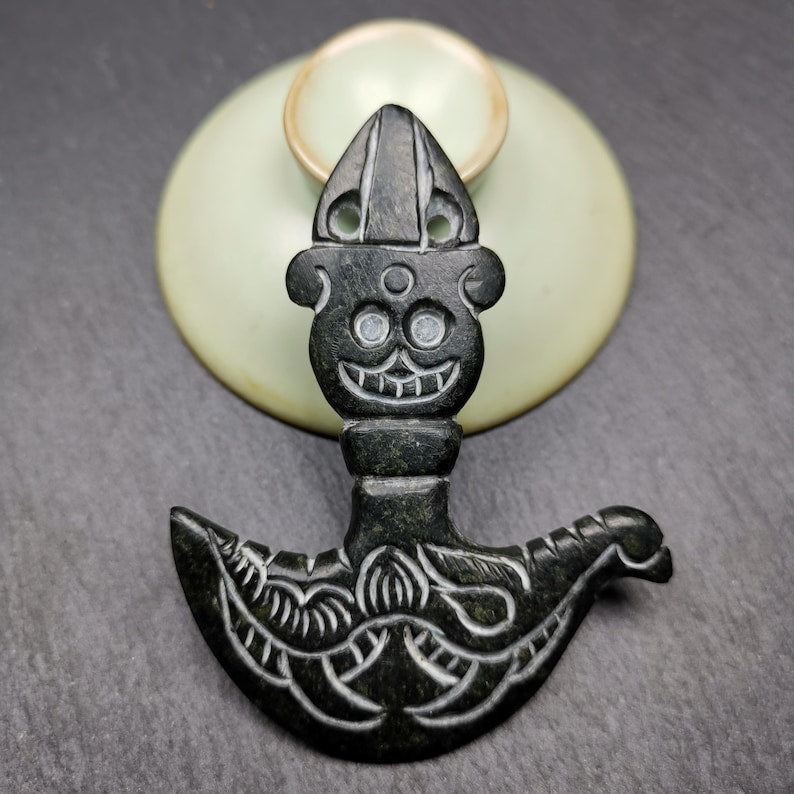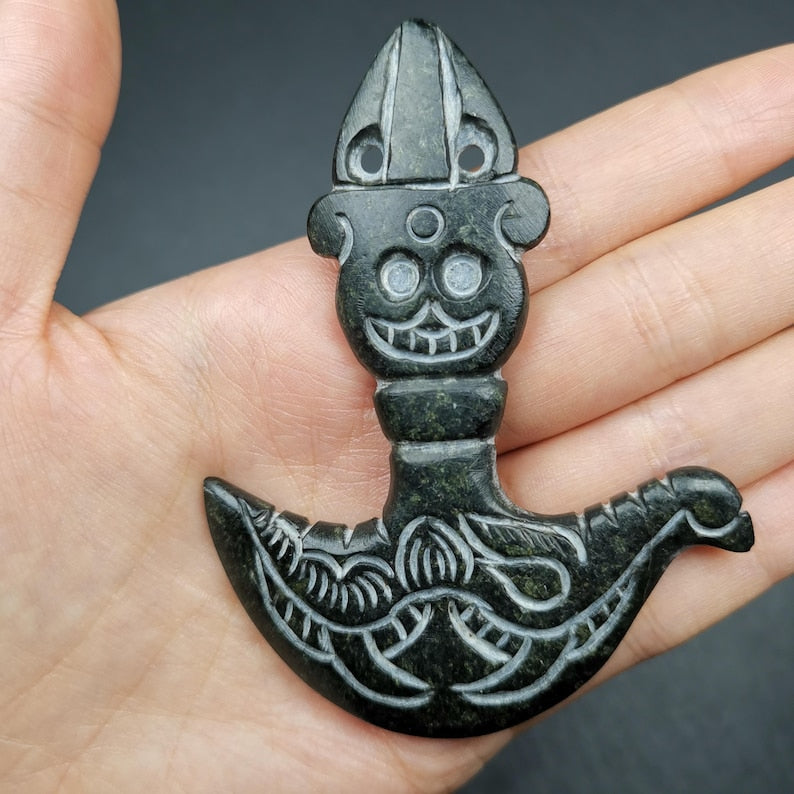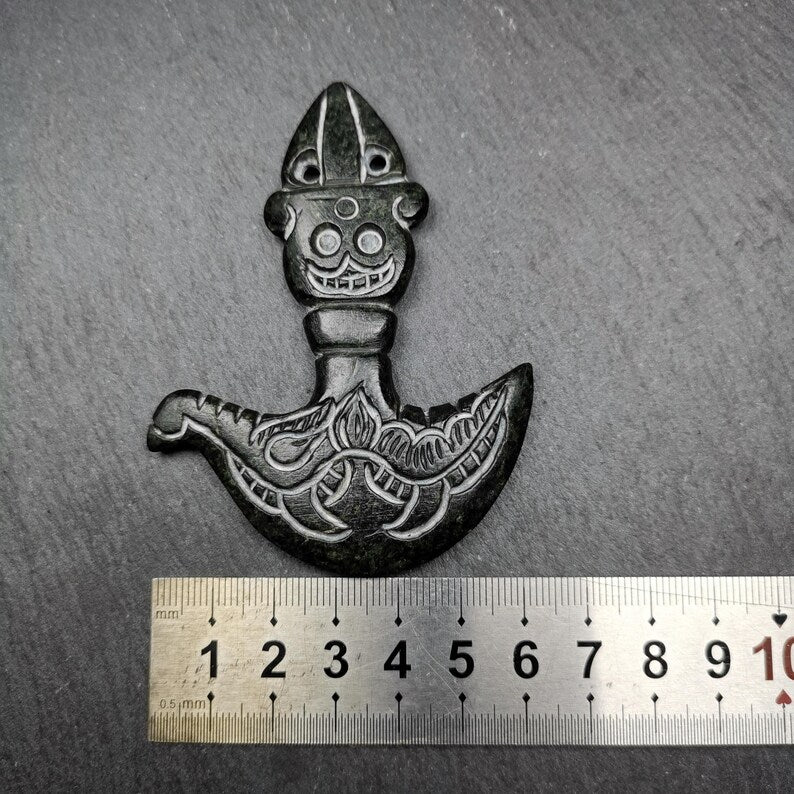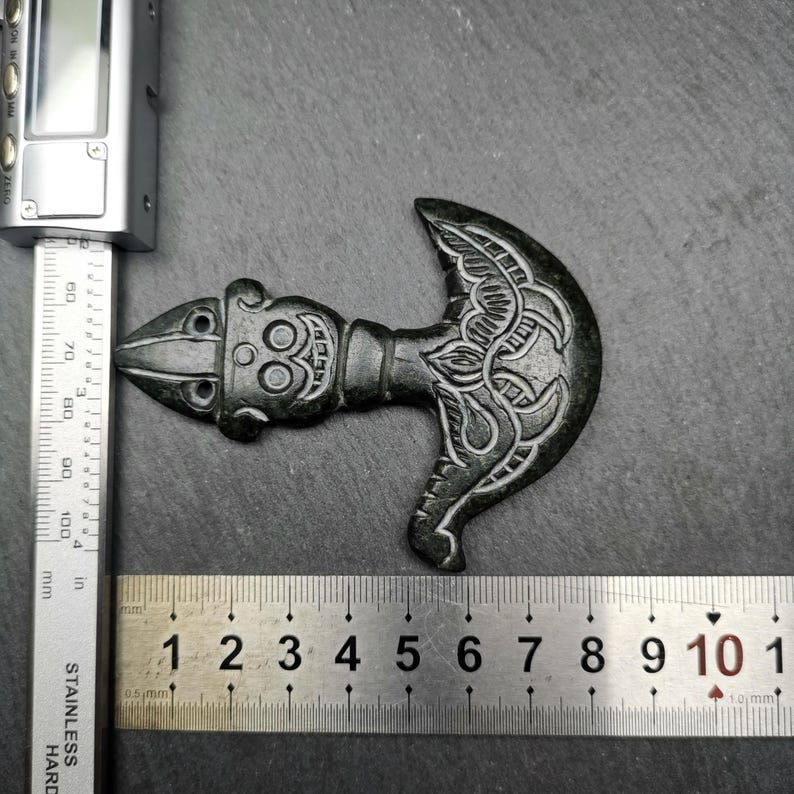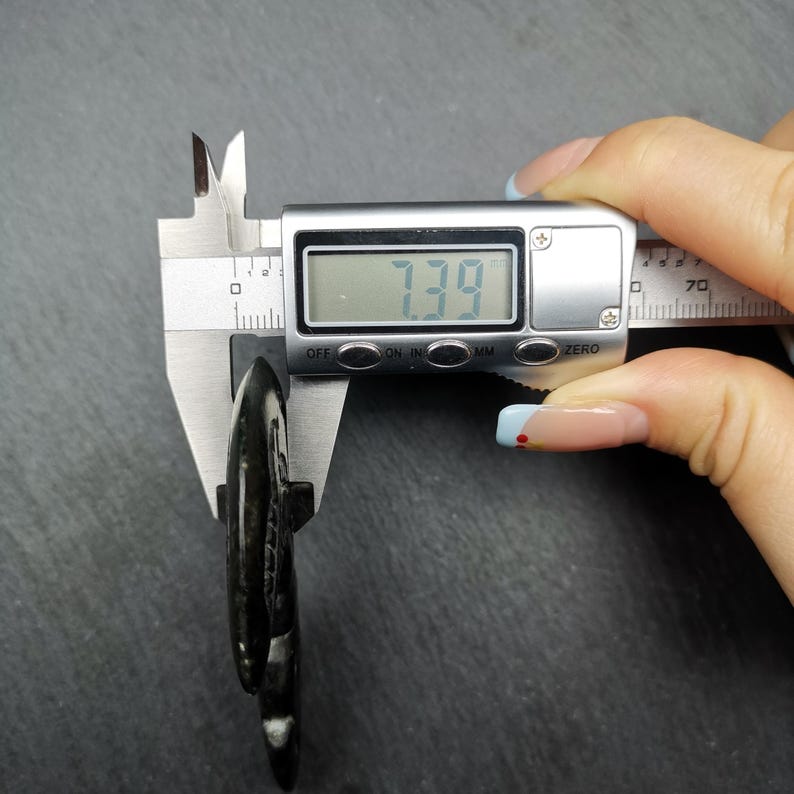Kartika Knife of the Dakinis | 8cm x 6cm
Kartika Knife of the Dakinis | 8cm x 6cm
Couldn't load pickup availability
ONLY ONE,UNIQUE
Discover the exquisite craftsmanship of our Hand Carved Obsidian Kartika, a magnificent ritual knife used by dakinis, meticulously handcrafted by skilled artisans in Hepo Town, Baiyu County—the heart of Tibetan handicrafts.
This impressive piece measures a substantial 11cm × 8cm, making it a standout addition to your spiritual collection or decorative display.
The double-sided engraving on lustrous obsidian showcases intricate designs that reflect the rich traditions of Tibetan culture.
Ideal for both ritual use and as a stunning decorative element, this Gandhanra Antique Tibetan Ritual Implement is not only a tool but also a work of art.
Embrace the energy and beauty of this perfect Kartika, a true testament to the rich heritage of Tibetan craftsmanship.
Details
100% Handmade
Pendant material:obsidian
Pattern: kartika,knife of the dakinis
Height: 8cm /3.2 inches
Width: 6cm/ 2.4 inches
Thickness: 1cm/ 0.4 inches
ABOUT KARTIKA
A kartika (Sanskrit: kartari; Tibetan: གྲི་གུག་, Wylie: gri-gug,or kartrika in Nepal,) is a small, crescent-shaped, hand-held ritual flaying knife used in the tantric ceremonies of Vajrayana Buddhism. The kartari is said to be "one of the quintessential attributes of the wrathful Tantric deities."It is commonly known as the "knife of the dakinis."Its shape is similar to the Inuit ulu or woman's knife, which is used for many things including cleaning skins.
While the kartari is normally held in the right hand of a dakini in Vajrayana iconography and spiritual practice, occasionally it can be seen being held by esoteric male deities,such as certain forms of Yamantaka.It is also found frequently in the iconography of the Tibetan Buddhist spiritual practice of Chöd.
The dakini's knife has a flat sharpened blue iron blade with a curved hook at its outer extremity, which enables the flaying activities of cutting, scraping, and pulling. Its faceted or eight-sided handle is attached to the upper edge of the blade by either a leaf-shaped golden mount or the wide-open mouth of a golden makara, and the handle's top is sealed by a half-vajra.
The same way that the bell and vajra are usually paired ritual items in Vajrayana spiritual practice and iconography (one is held in the right hand and the other simultaneously held in the left), the kartika usually appears as a pair with the kapala or "skull-cup".
The shape of the kartika, or trigug, with its crescent shape and the hook on the end, is derived from the shape of a traditional shape of the Indian butcher's knife.
Depictions of Vajrayogini typically contain the kartika as one of her attributes. In the iconography of the enlightened dakinis and tantric female yidams, it is common to find the hooked kartika knife in her right hand and the skull cup in her left, representing "the inseparable union of wisdom and skillful means."
Meanings
The traditional interpretation of the hook in Tibetan Buddhist imagery is that of the hook of compassion. It is the hook which pulls beings out of the cycles of transmigration. The hooked crescent-shaped knife of the dakini with its vajra handle pulls one forth from suffering, chops up the ego-centred self and is guided by the diamond clarity of the vajra.
The kartika is used to symbolize the severance of all material and worldly bonds and is often crowned with a vajra, which is said to destroy ignorance, and thus leading to enlightenment. Another more nuanced interpretation says that "the kartika represents the severing of the two Buddhist obscurations of defilements (klesha avarana) and knowledge (jneya avarana) that obstruct the path of enlightenment." The kartika is also used to cut through human obscurations to progress on the spiritual path including "pride, lack of belief, lack of devotion, distraction, inattention, and boredom."
ABOUT GANDHANRA
We're artisans from Hepo Township, Baiyu County,Tibetan.
We use ancient Tibetan handicrafts to make Tibetan Buddhist instruments.
All our crafts are directly handmade from Tibet.
When you purchase this craft it helps and support our artisan and our families in Tibet.
Your support is highly appreciated.
Packaging &Shipping:
As per our Product nature, we do the packaging.
For every single product, we do the bubble wrapping along with the paper carton boxes is also used for more safety.
In the case of heavy products, we also use wooden boxes too for more safe packaging and sent for the shipping process.
Feedback:
Our goal is to make sure my customer is happy and satisfied when you shopping with us.
Please contact or email before leaving negative feedback.
We will try out best to solve our issues.
Please give us the chance to resolve any problem.
Notice:
1.Please allow 1-2mm error due to manual measurement.
2.The color may have different as the difference display.
3.Please make sure you do not mind before you bid.
THANK YOU FOR purchasing our product.
